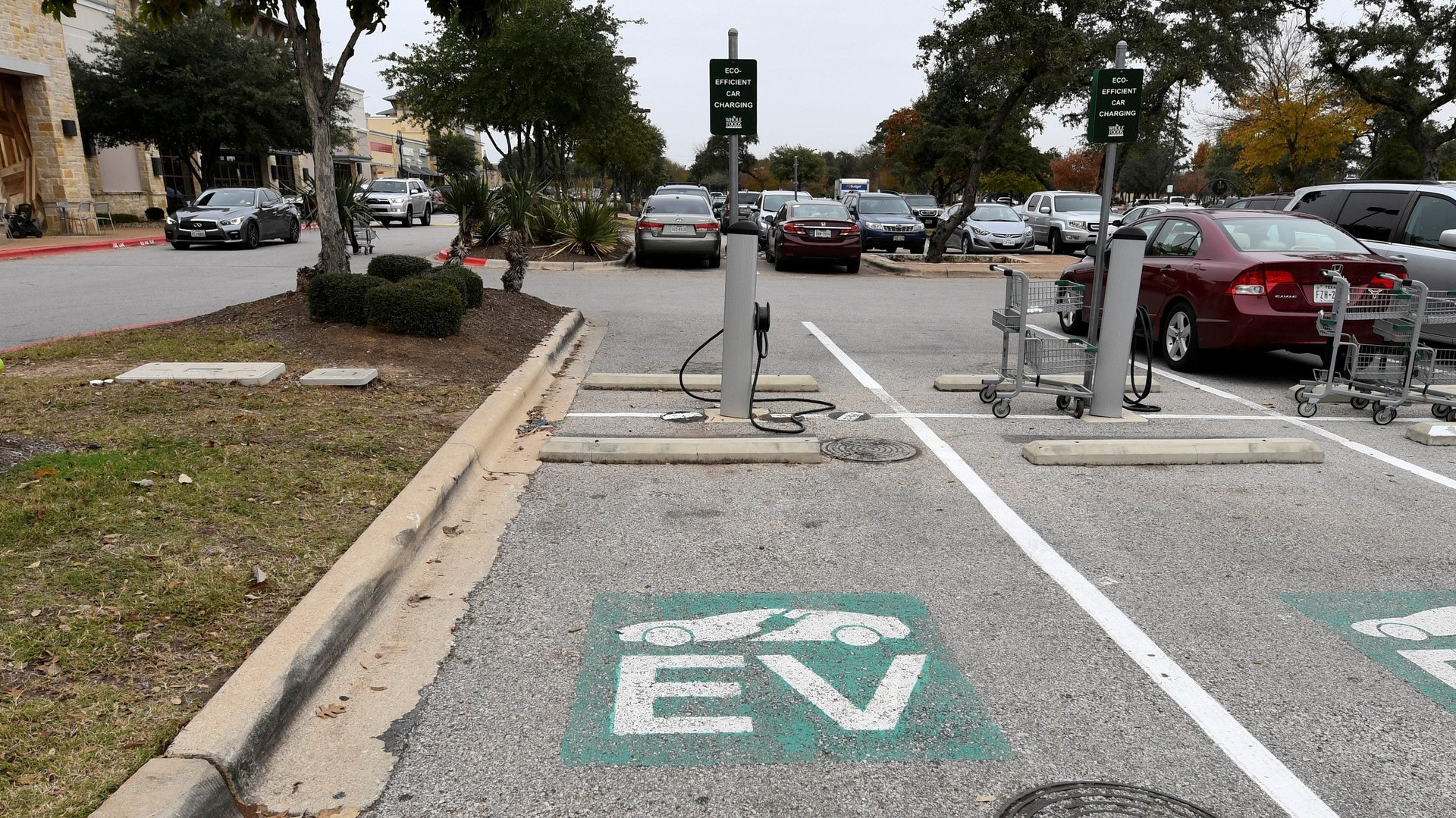Why are Starbucks and Kroger investing in EV charging stations?
Electric vehicle (EV) charging stations are popping up in the parking lots of businesses like Kroger and Starbucks, reflecting the growing demand for EVs as well as changing consumer habits in the US.


Electric vehicle (EV) charging stations are popping up in the parking lots of businesses like Kroger and Starbucks, reflecting the growing demand for EVs as well as changing consumer habits in the US.
On June 20, Kroger announced it will install more than 350 stations at its stores in 10 states from California to Wyoming. The stations will vary by location in EV compatibility and charging speeds, and Kroger said that it will offer charging times of around 30 minutes per vehicle—for an undisclosed fee. In the future, the grocery chain said it plans to add stations in six more states in the US South and Midwest.
Kroger is part of a growing number of retailers adding EV charging stations to their parking lots. In March of 2022, Starbucks said that it will install EV chargers in up to 15 parking lots along a 1,350-mile route from Denver to Seattle, with stops available every 100 miles. The latest initiatives from stores may signify a desire to cater to younger customers.
EV owners remain a sliver of the vehicle market in the US, and they tend to be younger consumers. Broken down by age, 25 to 34-years-old in the US make up the largest share of EV owners, according to a YouGov poll tracking EV ownership over the last year, followed by those 35 to 44, with 18 to 24-year-olds the third largest group. While Gen X spends the most on groceries of all age groups, millennials will likely take the top spot for food purchases over the next decade. For Kroger at least, the investment in EVs could be a way to attract younger people and foster loyalty as they become more serious shoppers.
Meanwhile, members of Gen Z are more willing than their older counterparts to pay for sustainable products, tracking with what the grocery store said in a statement—that it wants to offer “customers easy ways to live a more sustainable lifestyle.”
In addition to cultivating loyalty with younger customers, EV stations make sense for retail stores as an additional revenue stream, where shoppers can leave their vehicle in the parking lot to charge as they pick up coffee or groceries. Compared to pumping gas, there are fewer electric charging stations and the charging process takes longer. These stores are in a good position to cater to the growth of EV ownership: 1.4 million electric vehicles—or 0.4% of all vehicles in operation in the US—were on the road on Jan. 1, 2022 up 45% from the year before, according to data from S&P Global Mobility.
The changing suburban landscape
Food retailers are “making a series of bets around changing what the American landscape looks like and how we as consumers interact with that every day,” Meredith Sandland, who was formerly a chief development officer at Taco Bell, said in a webinar about the future of ghost kitchen in March of 2022. It’s already happening—Taco Bell has opened drive-thru-only locations to attract tech-savvy, online delivery customers.
The increase in EV stations also signals a shift in what suburbia looks like. Millennials are getting to the stage where they want to buy houses, own cars, and have kids—”all the things that they put off doing and then the generation that comes behind them, they want to do it in a different way, right? They want to live more urban lifestyles,” said Sandland. “You’re going to have all of the same investment in our domestic infrastructure that you had over the last 50 years as the Baby Boomers came out. You’re going to have to remake all of this extended suburbia into something that’s denser, more walkable, more appealing to these generations.”